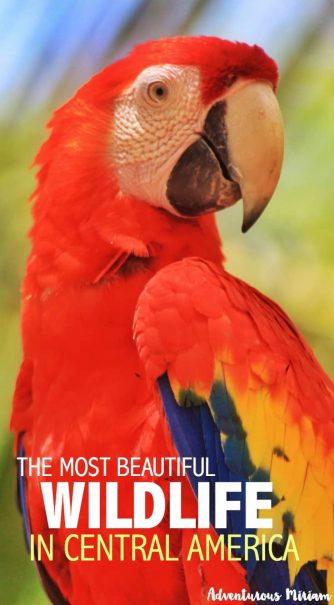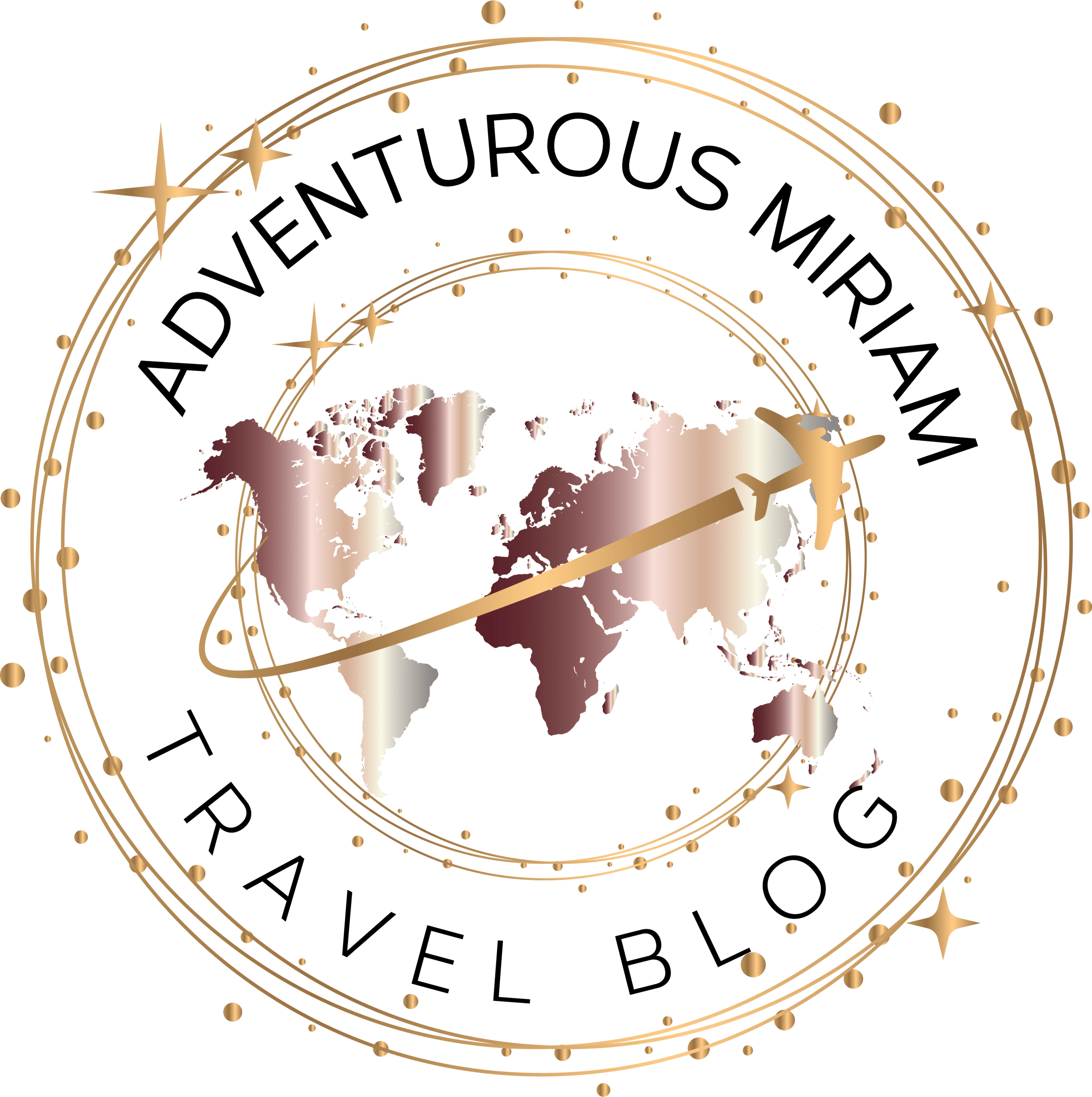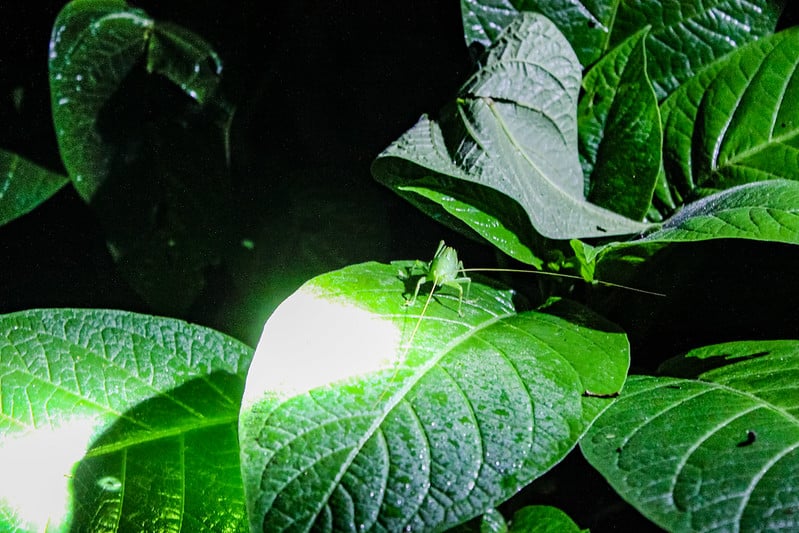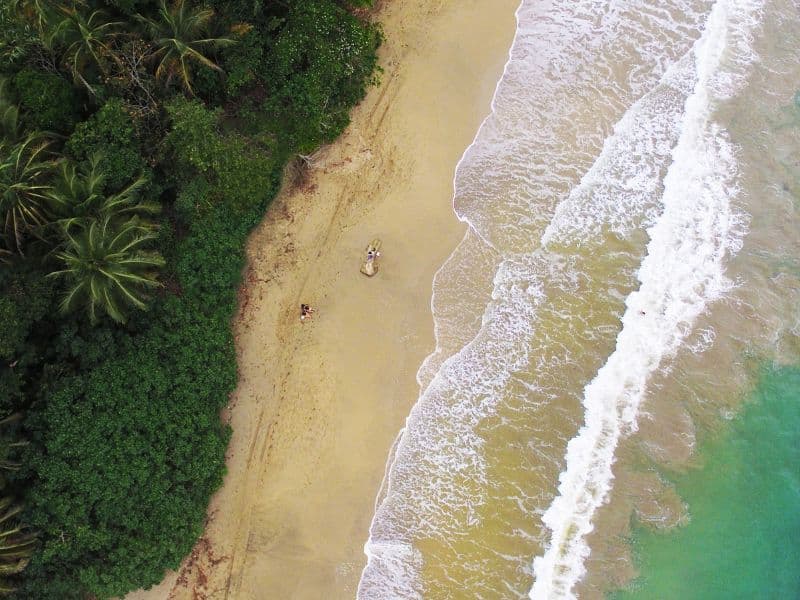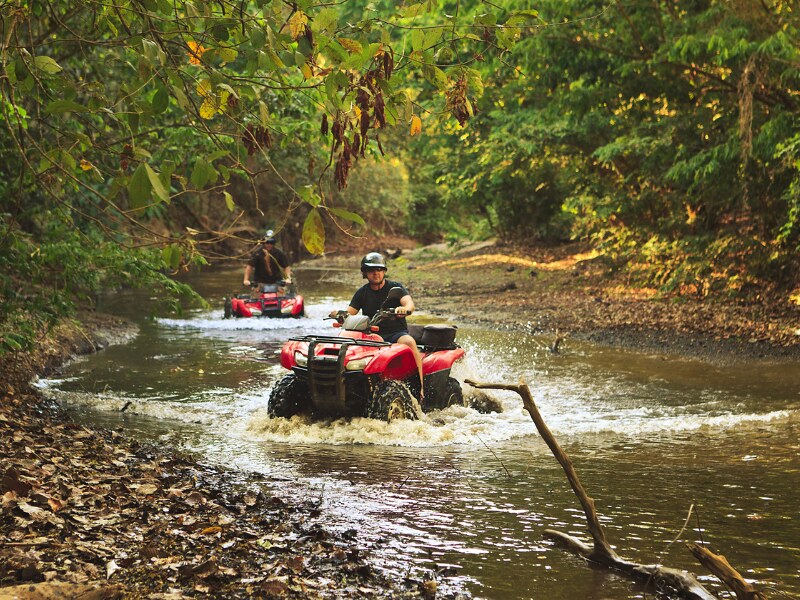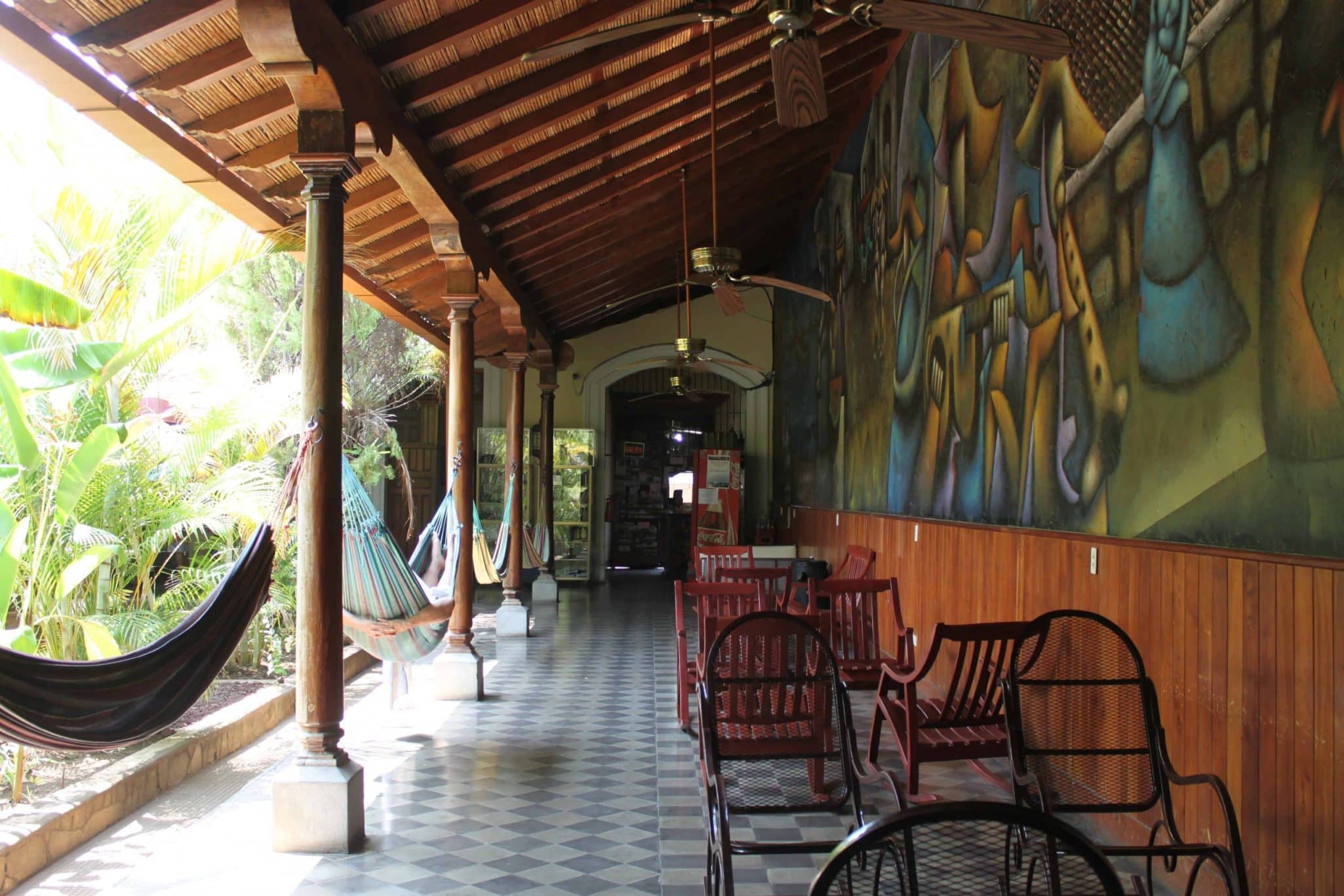20 amazing animals you should see in Central America
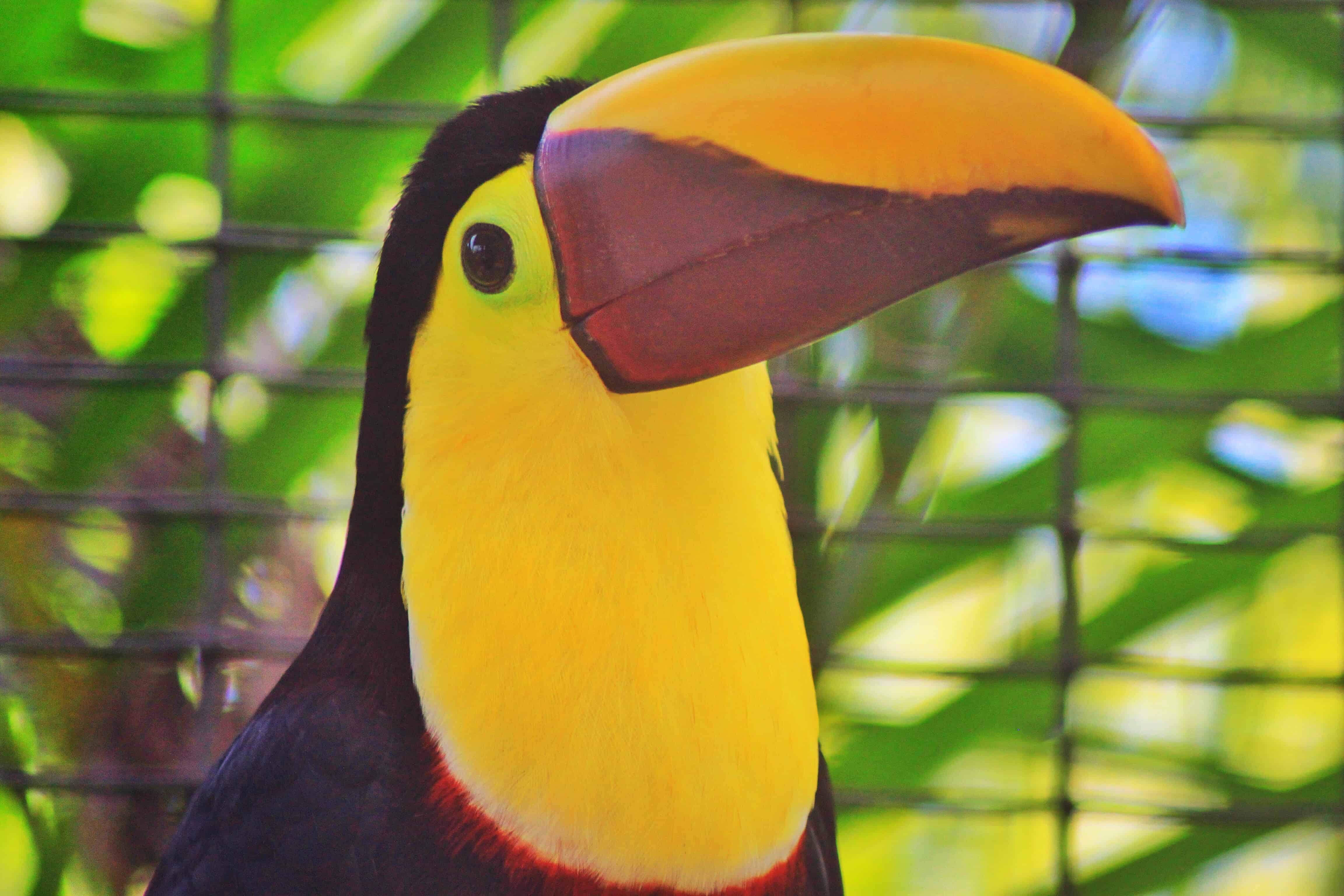
Central America is a goldmine when it comes to wildlife and great photo opportunities. When traveling across the continent I found that Honduras and Costa Rica offered the best places to see them.
One explanation is that Honduras is still untouched by tourists and that 25% of Costa Rica consists of national parks.
In these well-kept parks, you can find monkeys, sloths, iguanas, frogs, butterflies, sea turtles, and many types of birds. As a nation, Costa Rica protects its wildlife and promotes green policies.
Read next: 12 best places to see wildlife in Costa Rica
This post contains referral links for products I love. Adventurous Miriam earns a small commission at no extra cost to you if you purchase through my links. I appreciate your support ♡ Learn more
1. Snakes
Central America is home to around 140 species of snakes, including some pretty well-known ones like the fer-de-lance and the eyelash viper.
These snakes live in all sorts of places like rainforests, swamps, and dry forests. They’re really important for keeping the populations of small animals and insects in check.

2. Poison dart frog
Poison dart frogs are tiny and come in bright colors like blue, yellow, green, and red. You can find them in the tropical rainforests of countries like Costa Rica and Panama. Their skin is toxic, which keeps predators from eating them.

3. Red-eyed tree frog
The red-eyed tree frog is easy to spot with its red eyes, bright green body, and blue and yellow stripes on its sides. These frogs live in the rainforests of Central America, especially in Costa Rica and Honduras.
They’re nocturnal and use their bright colors to scare off predators.

3. Jaguar
Jaguars are the biggest cats in the Americas, and you can find them in the rainforests of Central America, from Mexico down to Panama.
They’re strong and great swimmers, often hunting near water. Jaguars help keep the ecosystem balanced by controlling the populations of other animals.

4. Baird’s tapir
Baird’s tapir is the largest land mammal in Central America.
It has a snout that looks a bit like a small trunk. These tapirs live in dense forests and swamps from southern Mexico to northern Colombia. They’re mostly active at night and eat leaves, twigs, and fruits.

5. Cougar
Cougars, also called mountain lions or pumas, are found all over Central America in forests, mountains, and swamps.
They’re solitary and elusive, mostly hunting deer and smaller mammals. Their range extends from Canada all the way down to South America.

6. Monkeys
Central America has several types of monkeys, including howler monkeys, spider monkeys, and capuchin monkeys.
Howler monkeys are known for their loud calls that can travel for miles. Spider monkeys are amazing climbers with long limbs and tails, while capuchin monkeys are smart and often use tools.
These monkeys live in tropical forests and help with seed dispersal.
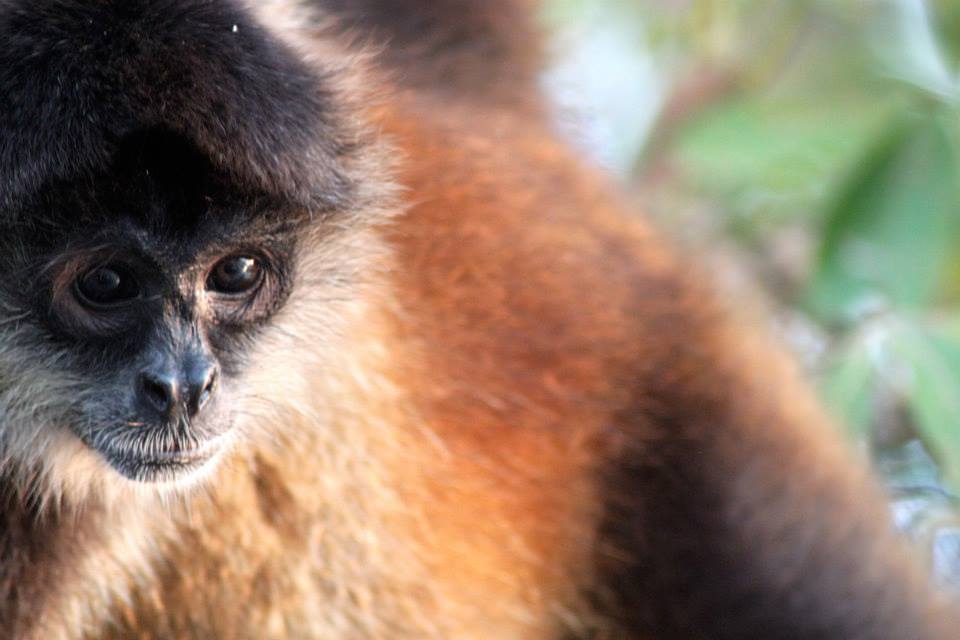
7. Iguana
Iguanas are common in Central America, with the green iguana being the most well-known.
They live in rainforests, near rivers, and even in urban areas. Iguanas are mainly herbivores, eating leaves, flowers, and fruits. They’re great climbers and are often seen basking in the sun.

8. Mexican free-tailed bat
The Mexican free-tailed bat is found in large numbers across Central America.
These bats are known for their speed and agility in the air, often reaching speeds of up to 100 miles per hour. They roost in caves, buildings, and under bridges, emerging at dusk to feed on insects.

9. Hercules beetle
Hercules beetles are among the largest beetles in the world, with males having impressive horn-like pincers.
These beetles live in the rainforests of Central America. The larvae feed on decaying wood, while adults are often found on rotting fruits.

10. Resplendent Quetzal
The resplendent quetzal is a brightly colored bird found in the cloud forests of Central America, especially in Costa Rica and Guatemala.
Known for its vibrant green and red plumage, it’s a national symbol of Guatemala. Quetzals eat fruits, insects, and small animals, and they nest in tree cavities.
Read next: 10 best places for bird watching in Costa Rica

11. Parrots
Central America is home to several species of parrots, including the yellow-naped amazon. These birds are known for their bright feathers and ability to mimic sounds. Parrots live in tropical rainforests and savannas, and they mainly eat seeds, nuts, and fruits. They’re social animals, often seen in flocks.
I met these two compadres in Honduras. Overall I saw lots of colorful birds during my travels in the country, especially parrots and the Honduran national bird, the macaw.
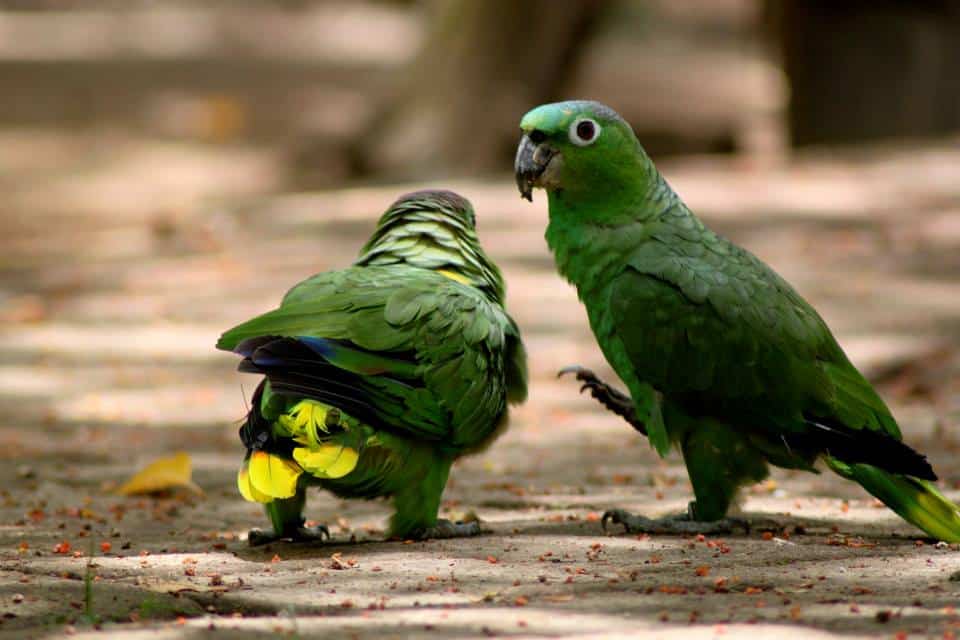
12. Macaws
Macaws are large, colorful parrots found in the rainforests of Central America. Species like the scarlet macaw and the blue-and-yellow macaw are well-known. They live in tall trees and are highly social, often seen in pairs or flocks. Macaws eat a diet of nuts, seeds, and fruits, using their strong beaks to crack open hard shells.
The macaw is also found widely across Guatemala. This one was sitting in a courtyard a few meters from our restaurant table in Chichicastenango. As long as you don’t poke them or stick your fingers in their mouth, they’re very chatty and peaceful.
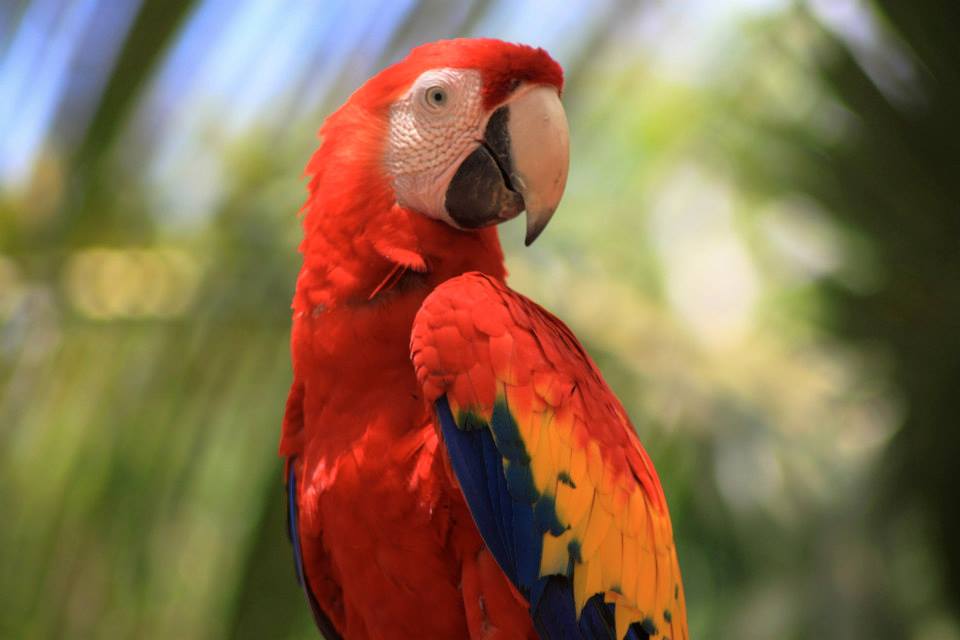
13. Dolphins
Dolphins in Central America are often found along both the Caribbean and Pacific coasts. Species like the bottlenose dolphin are common.
They live in pods and are known for their intelligence and playful behavior. Dolphins feed on fish and squid, using echolocation to find their prey.
Dolphins are also a common wildlife, especially along the coast of Honduras. Usually, they swim in pods of 2 to 12 dolphins.

14. Jesus Christ lizard
Central America has a wide variety of lizards, including the common basilisk, known as the “Jesus Christ lizard” for its ability to run on water.
These lizards inhabit rainforests, riversides, and even urban areas. They eat insects, small animals, and plants. Lizards play a key role in controlling insect populations.
They aren’t particularly big, but what they lack in size is made up for in speed.

15. The Kinkajou
Kinka-who? The kinkajou (pronounced kink ah joo) have small, hand-like feet and a dense, wooly fur. It kind of reminded me of the Philippine tarsier.
The kinkajou, also known as the “honey bear,” is a nocturnal mammal found in the rainforests of Central America. They have a prehensile tail and a long tongue used to extract honey from beehives.
Kinkajous eat fruit, nectar, and small animals. They are often seen moving through the trees at night.

16. Toucan
Oh, how I searched the jungles, trees, and forests for a toucan – the most intense colored animal, I’ve ever seen. It looks exactly like a toy with all the sharply defined contrasts. What a fascinating animal!
Toucans are easily recognized by their large, colorful bills. Species like the keel-billed toucan are common in the rainforests of Central America.
They eat fruits, insects, and small reptiles. Toucans play an important role in seed dispersal, helping to maintain the health of the forest.

17. Hummingbird
Central America is home to many species of hummingbirds, including the ruby-throated hummingbird and the violet-crowned hummingbird.
These tiny birds are known for their rapid wing beats and ability to hover. They feed on nectar from flowers and are important pollinators in the ecosystem.
Costa Rica is loaded with hummingbirds. A beautiful, speedy bird – nearly impossible to photograph. It took me 30 minutes to get a few good frames, plus a whole lot of patience and determination.
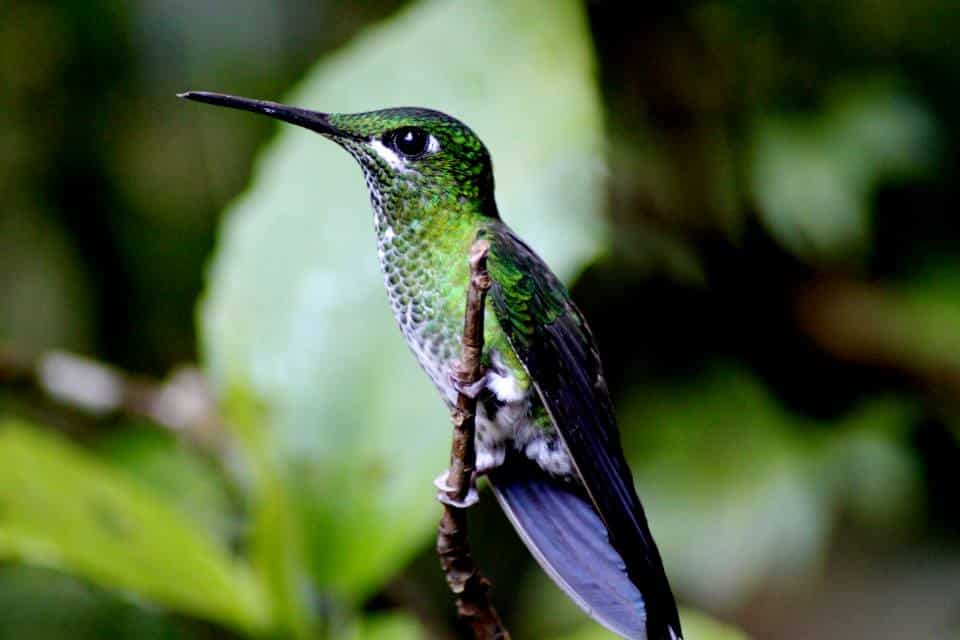
18. Sloth
Sloths are slow-moving mammals that live in the rainforests of Central America. Both two-toed and three-toed sloths are found here.
They spend most of their time hanging from trees, feeding on leaves and fruits. Sloths have a low metabolic rate and move slowly to conserve energy.
One of the highlights of our trip to Monteverde, Costa Rica, was seeing a sloth. Not only because I’ve never seen one before, but also because it’s so rare and odd-looking. Luckily for me, this one stayed in a tree right next to our hostel.
Read next: Sloths in Costa Rica and where to find them

19. Tarantula
Now, this not-so-charming type of wildlife is widely spread across Central America.
At the coast in Honduras, I saw several tarantulas crawling in and out of their burrows, and in the midsts of the town that is.
This very aggressive lady tarantula, the size of my hand, is from Costa Rica. Even the guide wouldn’t come near it.
Tarantulas are nocturnal hunters, feeding on insects, small mammals, and other spiders. Despite their fearsome appearance, tarantulas are generally harmless to humans. They play a crucial role in controlling pest populations.
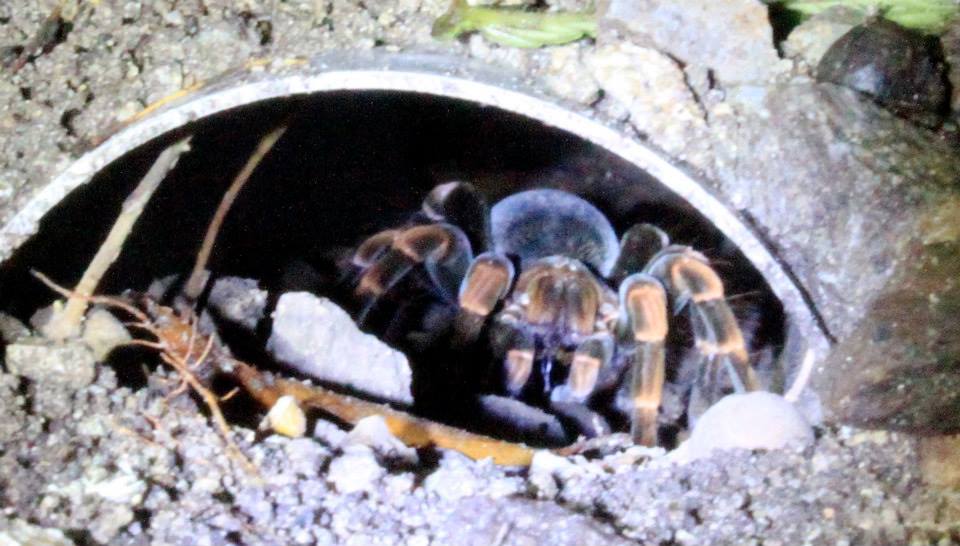
20. American crocodile
The American crocodile is found in coastal areas, rivers, and lakes throughout Central America.
They can grow up to 20 feet long and are known for their powerful jaws. These crocodiles feed on fish, birds, and mammals. They play an important role as apex predators in their ecosystem, helping to maintain the balance of aquatic life.

Save it!
